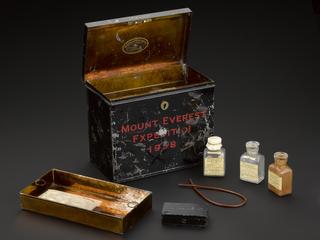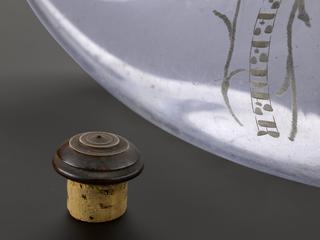














Bag for cinchona bark, known as a Seron, rawhide, brought from Peru, by the expedition of Ruiz and Pavon, 1777, with contents
Known as a seron in its native Peru, South America, this rawhide bag was used to store and carry cinchona bark. For centuries, local people had chewed or ground up the bark as a treatment for fevers and malaria. As the European powers began to expand both their trade routes and empires, cinchona became a highly important commodity. In the early 1800s, quinine, the primary anti-malarial component of cinchona, was first isolated, allowing the production of more effective drugs to combat the disease.
The bag was originally collected by the expedition of Hipolito Ruiz Lopez and Antonio Pavon y Jimienz, which was sent to Peru in 1777 by the Spanish monarch Charles III to explore the region.
The bag was later presented to the Wellcome collections by Alfonso XIII, King of Spain (1886-1941), in 1930.
Details
- Category:
- Materia Medica & Pharmacology
- Collection:
- Sir Henry Wellcome's Museum Collection
- Object Number:
- A654763
- Materials:
- bag, rawhide, contents, bark and contents, cloth
- Measurements:
-
overall: 8.618 kg
- type:
- bag
- credit:
- Alphonso XIII




